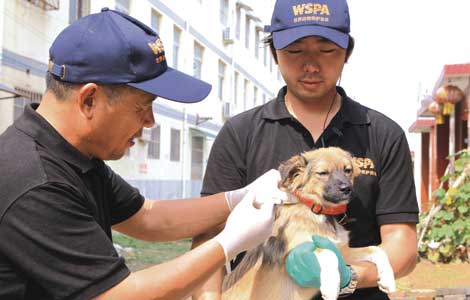Steely approach to clean air
Updated: 2013-10-09 07:18
(China Daily)
|
||||||||
The smoggy weather that Beijing and neighboring Hebei province and Tianjin are witnessing has prompted the three local governments to work out measures to reduce its impact on the environment and people's health.
Beijing, in particular, has taken even harsher measures, including rapidly upgrading the quality of local oil, closing down some polluting enterprises and placing stricter controls on the number of additional vehicles over the coming years.
The awareness that geographical proximity demands coordinated action to achieve the desired results has also prompted the three local governments to agree on the establishment of a joint policy mechanism to tackle the environmental threat.
Of all the available measures, limiting the use of vehicles is regarded as an immediate way of reducing smog. But the heavy smog that engulfed Beijing during the just concluded National Day holiday, when the capital witnessed far fewer vehicles on its streets, has raised doubts over the claim that the city's vehicle emissions are the main culprit.
This also highlights the need for a comprehensive program to be adopted to curb air pollution.
Beijing cannot treat its air problem by itself without policy coordination from neighboring Hebei. Of China's 10 cities with the worst air pollution, seven are in Hebei, and around a fifth of the pollutants drifting over Beijing originate from the province, some studies show. For example, Shijiazhuang, its capital city, had only 28 days that met required air standards from January to August.
Hebei has produced around a quarter of China's steel output and its crude steel production totaled 180.48 million tons in 2012, according to the National Bureau of Statistics.
Considering the existence of many small private steel mills, the actual steel output in the province may be higher. The colossal steel output is based on enormous coal consumption, a major source of air pollution.
Hebei's plan to slash its annual crude steel capacity by around a quarter by 2020, if successful, will certainly contribute to pollution control. But for a substantial difference to be made, the cut has to be harsher, and supplemented with a technological upgrade of existing industries.
For cleaner air, not only for itself but also for regions beyond, the province should not relent in its vowed efforts to streamline its sprawling and heavily polluting steel sector.
(China Daily 10/09/2013 page8)
Most Viewed
Editor's Picks

|

|

|

|

|

|
Today's Top News
Obama says he'll negotiate once 'threats' end
Unprotected sex brings sharp rise in HIV/AIDS
Japan-US military drill raises tension
Xinjiang bid to curb terrorist attacks
No Xmas in July for vendors at Yiwu's market
Xi calls for more APEC connectivity
Wet weather fails to dampen FTZ interest
US still in deadlock, but glimmers of hope emerge
US Weekly

|

|














